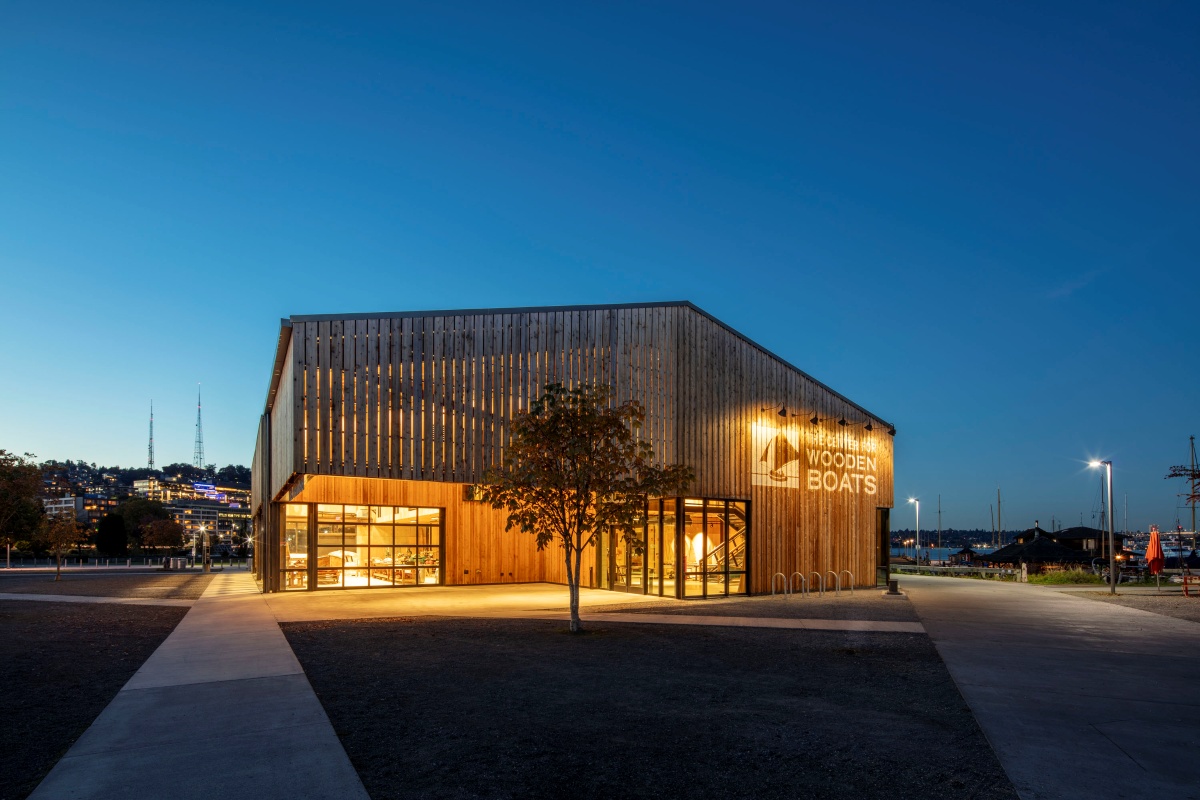Vitro Architectural Glass Showcased in Five of COTE® Top Ten 2025 Award Winning Projects
PITTSBURGH, October 2, 2025 – Now in its 28th year, the COTE® Top Ten program recognizes projects that meet the AIA Committee on the Environment's strict standards for social, economic and environmental impact.
Vitro Architectural Glass is pleased to announce that its Solarban® solar control low-e glass, and low-iron substrates Starphire Ultra-Clear® glass and Acuity® glass, are featured in half of the COTE® Top Ten award winners in 2025. This notable presence highlights the integral role Vitro's low embodied carbon, energy efficient and transparent glass solutions play in enabling the construction of innovative and environmentally responsible architectural projects globally.
The award-winning projects featuring Vitro glass are:
Wagner Education Center at the Center for Wooden Boats (Seattle, WA)
Featuring Solarban® 70 glass, the industry’s most trusted and proven triple-silver-coated low-e glass, the LEED® Gold Wagner Education Center serves as a new gateway for Seattle's Center for Wooden Boats (CWB), an organization dedicated to maritime heritage and hands-on historic small craft experiences. Its design incorporates an exterior shade system and operable doors, windows and skylights to engage natural forces through human operation.

Photography: Francis Zera
The Stanley Center for Peace and Security (Muscatine, IA)
A catalyst for global change, focusing on climate action, mass violence prevention and nuclear disarmament, the Stanley Center for Peace and Security, donning Solarban® 60 glass, is a net-carbon-negative renovation and the first building in Iowa to achieve Living Building Challenge certification. Now a vibrant community hub, the project supports the local economy and trades education and has sparked dialogue on climate action.
Founders Hall, Foster School of Business, University of Washington (Seattle, WA)
As a model for low-carbon construction and flexible design, Founders Hall, the first mass timber structure on the University of Washington campus, sets a new precedent for reducing embodied and operational carbon. The building’s design features Solarban® 72 Acuity® glass, ample collaboration spaces, administrative offices, classrooms and gathering areas, all connected by a five-story steel and wood staircase woven into the mass timber frame.
Irving Institute for Energy and Society, Dartmouth College (Hanover, NH)
To achieve decarbonization, Dartmouth College prioritizes reducing energy consumption in existing structures and ensuring high efficiency in new construction. The Irving Institute for Energy and Society exemplifies this strategy by integrating an ultra-high-performance addition featuring Solarban® 60 Starphire® glass into a 1970s building. This project aligns with a zero-carbon future and incorporates innovative systems to support sustainability goals.
Credit Human Headquarters (San Antonio, TX)
Redefining the modern workspace by emphasizing sustainability, employee wellness and collaboration, Credit Human's San Antonio Headquarters integrates biophilic principles and advanced indoor air quality systems to create a healthy, productive environment. Key features include, Solarban® 90 glass, the world’s first quad-silver-coated low-e glass, a solar-powered roof and reclaimed water systems that reduce potable water consumption by 97%.
For more information about these and other Vitro Architectural Glass products, visit vitroglazings.com or call 1-855-VTRO-GLS (887-6457).
About Vitro Architectural Glass
Vitro Architectural Glass is the largest glass producer in the Western Hemisphere, manufacturing a range of industry-leading, energy-efficient, high-performance products such as Solarban®, Sungate® and Starphire Ultra-Clear® glasses. Committed to continually raising the industry standard for sustainability, Vitro was the first U.S. glass manufacturer to have its complete collection of architectural glass products earn Cradle to Cradle Certified® status and the first North American manufacturer to publish third-party verified Environmental Product Declarations (EPDs) for flat glass and processed glass products. Additionally, as of April 2024, all Vitro architectural glass products meet the Top 20% Low Embodied Carbon (LEC) material Global Warming Potential (GWP) threshold the U.S. General Services Administration (GSA) established pursuant to the Inflation Reduction Act of 2022 and related guidance from the U.S. Environmental Protection Agency. Vitro operates seven glass production facilities across North America, four residential glass fabrication plants in Canada and one of the world’s largest glass research and development facilities in Pittsburgh, Pennsylvania. For more information, please visit VitroGlazings.com.

Media Contact:
Robert J. Struble
Vitro Architectural Glass
412-820-8138
rstruble@vitro.com
vitroglazings.com
